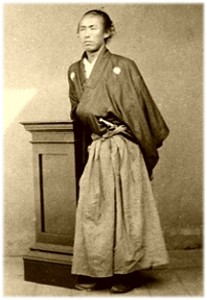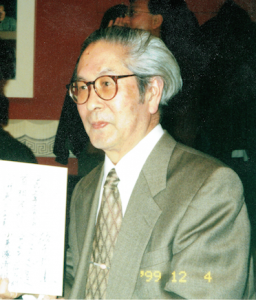A headline in today’s New York Times announces: “Critics Fault Failure of Western Policies in Growing Syrian Refugee Crisis.” Though it “was never any secret that a rising tide of Syrian refugees would sooner or later burst at the seams,” the Times reports, “little was done in Western capitals” to avert the disaster befalling Syrian civilians.
Amid this crisis, I recall words of wisdom of one of the most important men of the “samurai revolution at the dawn of modern Japan.” At the height of the tumult of the revolution, and less than one month since the last shogun, Tokugawa Yoshinobu, had announced his intention to abdicate and restore Imperial rule based on an historic peace plan, the author of that plan was engrossed in yet another plan to send men to Ezo (modern-day Hokkaido) in the far north of Japan to settle and exploit that mineral-rich wilderness, train them in the naval sciences, and save them from dying in the revolution.

Sakamoto Ryoma was working on the plan with Hayashi Kenzo, a Hiroshima samurai in the employ of Satsuma. In the eerily prophetic closing to a letter to Hayashi, Ryoma, just four days before his assassination, advised his friend to be very careful for his life, then wrote, “Now is the time for us to act. Soon we must decide on our direction, whether it lead to pandemonium or paradise” (my translation). Would that the current leaders of nations around the world heed Ryoma’s final words of wisdom to at least mitigate the current disaster.

(The image of Ryoma’s letter, dated the 11th day of the 11th month of Keio 3 (1867), is from the website of The Sakamoto Ryoma Memorial Museum. It is published in Miyaji Saichiro’s “Sakamoto Ryoma Zenshu” (坂本龍馬全集 = Complete Writings of Sakamoto Ryoma, 3rd edition, 1982). The photo of Sakamoto Ryoma is used in my Samurai Revolution, courtesy of Kochi Prefectural Museum of History.)
For updates about new content, connect with me on Facebook.
Ryoma: Life of a Renaissance Samurai, the only biographical novel about Sakamoto Ryoma in English, is available on Amazon.com.








